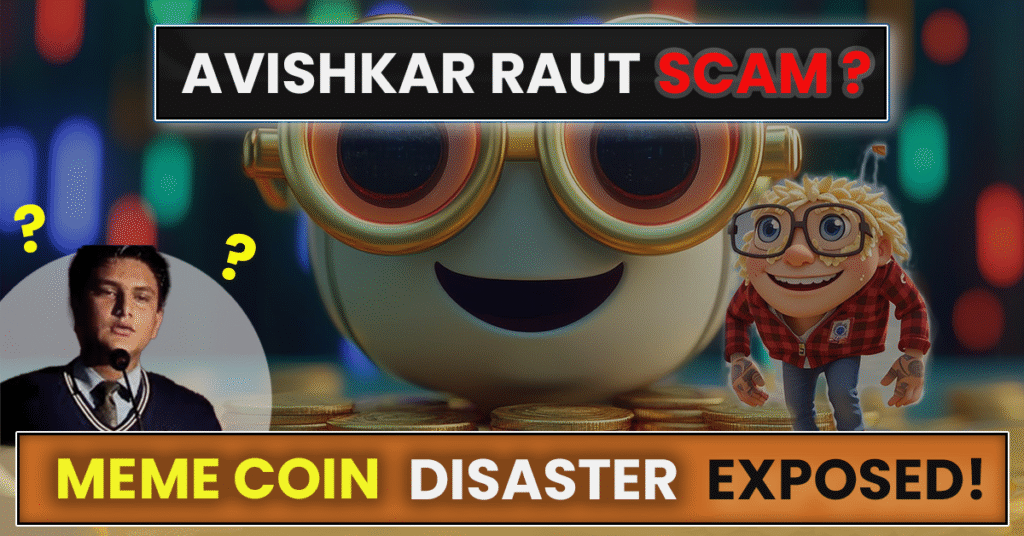
Introduction
In March 2025, Raut rose to become a youth activism figure after his viral speech sparked massive protests by the Gen Z of Nepal, who wanted the government to be taken to task and their system to change. His unexpected ascendancy gave hope to a lot of youthful followers who believed that he was a new voice to be heard. Riding this wave, Raut launched the crypto-based portion of the business called the $Avishkar token in the Solana blockchain, with a portion of the proceeds bound to charity.
Who is Avishkar Raut?
In order to see how this story has become so popular, it is necessary to first see who Avishkar Raut is. Raut was born in Nepal and grew to become a famous South Asian commentator and activist at a young age. Even when he was at the young age of 15 years, he had already established a reputation for being outspoken over social issues, and it was common to find him representing himself as a voice of his generation. His social media activities, where he used his youthful spirit and political consciousness, attracted both the attention of the region and the world.
The reason why Raut was especially interesting was his age. In a time when young people’s activism is on the rise, recent events such as Greta Thunberg or Malala Yousafzai have demonstrated that adolescents can lead the discussion on worldwide matters. Raut was a representative of that new breed of young leaders, thought to be untainted by politics and idealists.
This reputation, which was a strength, is a liability now. The fact that his name has become synonymous with a meme coin that failed to work has radically changed the way people view him from a sign of hope to one of controversy.
The Launch of $Avishkar
In September 2025, the word went around that a meme coin had been released in the Solana blockchain named $Avishkar. Similar to several meme tokens, it was focused on hype, not utility. It did not have any radical technology, a serious roadmap, or an established use case. Rather, the coin was gambling on the name of Raut and the passion of his followers.
Initial buzz was promising. The project was viewed by early investors as a chance to help a young activist as well as to ride the meme-coin speculation wave, where you can become rich overnight. Even some advertising campaigns had hinted that there was a charitable motive to it, with the token being a means to repay society, as well as to have financial gain.
The basics were, however, poor. No audited smart contract, no in-depth tokenomics other than the essentials, and no information was given on how liquidity would be handled. Nevertheless, a lot of people came in – attracted by the hype and an opportunity to get the next Dogecoin or Shiba Inu.
The Collapse: $50,000 in Liquidity Drained
The optimism didn’t last long. Several days after the project was launched, it was reported that the project had lost about 50,000 dollars in liquidity through its pools. Liquidity pools are the foundation of the decentralised exchanges for those not acquainted with crypto mechanics. They enable the free trading of tokens, and without them, the market of a token collapses.
Liquidity pulling out of $Avishkar was perceived to be a rug pull. In these schemes, insiders or liquidity controllers of the projects steal the money, and the investors are stuck with the worthless tokens. The price of Avishkar went down nearly overnight.
It was a disaster to many who had sunk their funds in it, or at least money they could not afford to lose. Neighbourhood meetings soon were full of remorse and indignation.
Backlash Across Platforms
The backlash was immediate and widespread.
- On Reddit, threads described the project as a “classic scam”, warning others to stay away from personality-driven tokens.
- On X (formerly Twitter), users debated whether Raut himself was complicit or whether he had been manipulated by older crypto insiders.
- In Telegram groups, screenshots circulated showing angry investors demanding explanations.
The narrative shifted from excitement about a promising new coin to anger at what many saw as betrayal. For supporters of Raut’s activism, the disappointment ran deeper. This wasn’t just about losing money — it was about losing faith in a figure they had trusted.
Was Raut Responsible?
The most pressing question is whether Avishkar Raut himself orchestrated the rug pull. At present, there is no definitive evidence linking him directly to the liquidity withdrawal. The blockchain shows that funds were removed, but unless forensic analysis identifies wallet owners, responsibility remains murky.
Several scenarios are being floated:
- Direct Involvement – Critics argue that since the token bore his name, Raut cannot be absolved of responsibility.
- Naïve Figurehead – Some suggest that Raut may have lent his name without fully understanding the mechanics, making him more victim than villain.
- Exploited Symbol – Another theory posits that more experienced crypto actors used his popularity as a cover for their own financial gain.
Regardless of the truth, the association has already tarnished his image. In the public eye, perception often outweighs evidence, and right now, the perception is deeply negative.
The Broader Impact
On the Reputation of Avishkar Raut
Raut has suffered a terrible blow to his credibility as an activist. Even his previous supporters who thought he was a symbol of youthful integrity now doubt his judgment.
The harm to trust can be irreparable even in the case that future investigations prove him right. Trust is the whole thing in activism – and this scam has ruined it.
On Meme Coin Culture
The $Avishkar debacle highlights an ongoing problem with meme-coin culture, where a project can succeed on hype but has no insurance. Meme coins are volatile and speculative in nature. However, in a fatal combination of parasocial trust and financial risk, when bound to personalities, they generate a lethal mixture. People are not simply sold but in the form of tokens. And when said individuals fail, the backlash is more individual and more combustible.
On Regulation and Investor Protection
Such cases can hasten the demand to establish more regulations in the crypto market. Although regulators have continued to lag behind decentralised finance, big rug pulls make it more difficult to overlook. There is a possibility that governments start to enforce tougher regulations concerning token launches, celebrity endorsements and liquidity management.
The Human Side: Loss to the investors
Behind the headlines lie real people who have lost in reality. To a lot of people, it was not just a speculative move that they made with $Avishkar; it was a personal investment in someone they liked. Others were youthful themselves and possibly were driven by the activism of Raut and felt like joining something not only financially lucrative but also socially important.
Now, those same investors are left not just poorer but disillusioned. The psychological toll of feeling betrayed by a trusted figure is often as damaging as the financial loss.
Lessons from the $Avishkar Rug Pull
- Do Your own Research (DYOR) – however good the figurehead, investors need to look under the technical and financial hood of a project.
- Demand Transparency Projects ought to publish audited contracts, transparent tokenomics and liquidity lock information.
- Caution of Personality-Based Coins – A token based purely on hype around a person is likely to explode.
- Young Faces Are No Shields – The fact that a venture is associated with a teenager or activist does not mean it is safe.
- Regulatory Lapses Count–In such situations, the investors are in a precarious position until more explicit safeguards are enacted.
What Happens Next?
It has not yet been announced that a formal investigation into the token of $Avishkar has been declared. Crypto communities are monitoring blockchain transactions to determine what happened to the liquidity withdrawn. Whether or not Raut head-on collides with the controversy remains to be seen.
In case he was manipulated or fooled by this, this might prove a cautionary tale about the perils of young political figures who associate their names with projects of which they do not fully understand. He would have been a co-conspirator, and this would have defined him in the coming years.
Anyhow, the cat is already out of the bag – and the $Avishkar rug pull is already included in the current collection of crypto-cautionary tales.
No formal investigation has so far been declared, yet the consequences of the crash of the $Avishkar token are still felt in the expanding crypto ecosystem in Nepal. The incident highlights how a digital economy with a rapid pace of innovation and investor protection is delicate.
Conclusion
The meme coin of Avishkar Raut and his story is a radical reminder of the vulnerability, the risk, and the ethical concerns inherent in the cryptocurrency environment. An activist who once had his share of fame due to his promise is now in the midst of a scandal that has cost investors money and cost him credibility.
It is not yet known whether he turns out to be an innocent victim, a collaborator, or neither, but there is one evident thing: the crypto market is a hazardous place to those who are influenced by hype and personalities, not by transparency and fundamentals.
A digital marketer possessing excellent knowledge and skill in off-page, on page and local SEO is competent in the challenging environment. Hard-working, energetic, and a quick learner for any task delegated. Enthusiastic to learn and constantly upgrade knowledge. Mohit brings over 2 years of experience in crafting content that not only ranks well but also provides valuable insights to readers.
